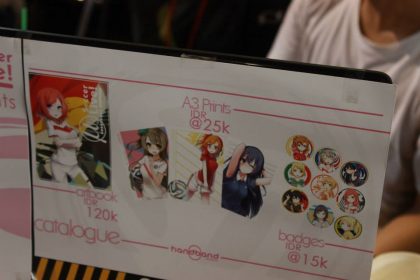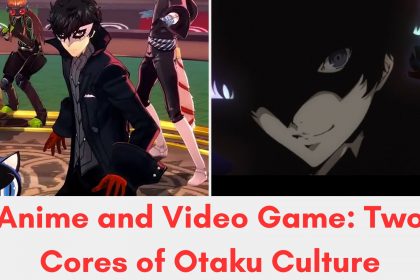In the world of anime and manga, villains and antagonists play a critical role in shaping the stories we love. These characters add depth, conflict, and intrigue to the narratives, pushing the boundaries of morality and challenging the protagonists. From enigmatic masterminds to tragic figures driven by revenge, the portrayal of villains and antagonists in anime and manga is a captivating and essential element. We will journey into the multifaceted nature of these characters. Explore their psychological depth and motivations, analyze their visual design and symbolism, discuss their potential for redemption and character development, and examine their influence on fan culture. Join us as we unravel the fascinating world of villains and antagonists in anime and manga.
Understanding the Role of Villains and Antagonists in Anime and Manga
Villains and antagonists serve as catalysts for conflict and tension within the narratives of anime and manga. They are the forces that stand in opposition to the main characters, creating obstacles and challenges that must be overcome. By presenting formidable adversaries, the presence of villains and antagonists raises the stakes and heightens the emotional investment of the audience. These characters often possess unique abilities, cunning intelligence, or compelling ideologies that make them formidable opponents. Their interactions with the protagonists drive the plot forward, leading to dramatic confrontations, character growth, and unexpected twists. Without the presence of well-crafted villains and antagonists, the stories in anime and manga would lose a crucial element of excitement and suspense.
The Complexity of Villainous Characters
Villains and antagonists are typically portrayed as opposing forces to the protagonists. But, their characters often possess layers of complexity and nuance that blur the line between good and evil. Some villains are designed to evoke sympathy or empathy from the audience, revealing tragic backstories or motivations rooted in pain and trauma. These sympathetic villains challenge conventional notions of morality and make us question the nature of evil itself. On the other hand, morally ambiguous antagonists present conflicting ideologies and motivations, forcing the audience to consider alternative perspectives and reevaluate their own beliefs. The complexity of these characters adds richness and depth to the narratives, allowing for thought-provoking storytelling and exploration of the human condition.
Iconic Villains and Antagonists in Anime and Manga
Anime and manga are replete with iconic villains and antagonists that have left an indelible mark on the medium. One such example is the character Light Yagami from the series “Death Note.” Light starts as an intelligent and ambitious high school student who stumbles upon a supernatural notebook. It grants him the power to kill anyone whose name he writes in that notebook. As the story progresses, Light’s descent into darkness and his transformation into the self-proclaimed god of a new world make him a compelling and complex antagonist. Another notable example is the colossal and enigmatic Titans from “Attack on Titan.” These towering humanoid creatures pose an existential threat to humanity and serve as the driving force behind the series’ gripping narrative. The portrayal of these iconic villains and antagonists showcases the diverse range of characterizations and storytelling approaches within the anime and manga medium.
Psychological Depth and Motivations
Behind every villain or antagonist lies a complex web of psychological depth and motivations that shape their actions. Many villains are driven by traumatic pasts or tragic circumstances. Those conditions have shaped their worldview and fueled their desire for revenge or power. These characters often resonate with the audience on a deeper level. Their struggles and motivations tap into universal themes of loss, betrayal, and the search for identity. Anime and manga show us the complexities of human nature and forces that drive individuals to embrace villainy.
Visual Design and Symbolism
In anime and manga, the visual design of villains and antagonists is carefully crafted to reflect their inner nature and enhance their impact on the audience. Dark aesthetics, distinct features, and menacing appearances are often employed to visually differentiate these characters from the protagonists. Their designs evoke a sense of mystery, danger, or unease, effectively conveying their villainous nature. Additionally, symbolism plays a significant role in the portrayal of villains and antagonists. Certain colors, patterns, or motifs may be associated with specific characters, representing their ideologies, affiliations, or hidden meanings. These visual elements contribute to the overall storytelling and create a lasting impression on the viewers.
Villain Redemption and Character Development
While villains and antagonists are typically associated with evil and conflict, anime and manga often explore the possibility of redemption and character development for these characters. Through well-crafted story arcs, some villains undergo transformative journeys that challenge their beliefs and lead to personal growth. These arcs humanize the villains, revealing their vulnerabilities and potential for change. The process of redemption not only adds complexity to their characters but also offers valuable lessons about forgiveness, empathy, and the capacity for change. This reminds us that even the most seemingly irredeemable characters can find redemption and contribute to the greater good.
The Influence of Villains and Antagonists on Fan Culture
Villains and antagonists in anime and manga have a significant impact on fan culture. These characters often garner a dedicated fan following, inspiring creative expressions such as cosplay and fan art. Cosplayers embody the essence of their favorite villains or antagonists, bringing them to life through intricate costumes and detailed makeup. Fan artists, on the other hand, reinterpret and reimagine these characters through their artwork, exploring different visual styles or showcasing alternative narratives. Villains and antagonists also spark passionate debates and fan theories, as fans eagerly dissect their motivations, actions, and potential hidden meanings. The influence of these characters extends beyond the pages or screens, permeating fan communities and fostering a vibrant and engaged fan culture.
Unique Approaches to Villains and Antagonists in Anime and Manga
Anime and manga continually challenge conventions and offer unique approaches to villainy. Some series subvert expectations by presenting characters who initially appear to be villains or antagonists. Though, the story teller reveal hidden depths or unexpected alliances later. These narrative twists challenge the audience for their preconceived notions of good and evil. Additionally, psychological manipulation and mind games are often employed by villains and antagonists as weapons. These events create intricate cat-and-mouse dynamics with the protagonists.
Conclusion
The portrayal of villains and antagonists in anime and manga is a testament to the complexity of the medium. Moreover, these characters serve as catalysts for conflict and tension, driving the narratives forward and challenging the protagonists. From sympathetic villains with tragic backstories to morally ambiguous antagonists with conflicting ideologies, the depth and nuance of these characters make them captivating and thought-provoking. The visual design and symbolism associated with villains and antagonists enhance their impact on the audience. Beside that, the exploration of redemption and character development adds layers of complexity and emotional depth. The influence of these characters extends beyond the stories themselves, which shaping fan culture and inspiring creative expressions.













